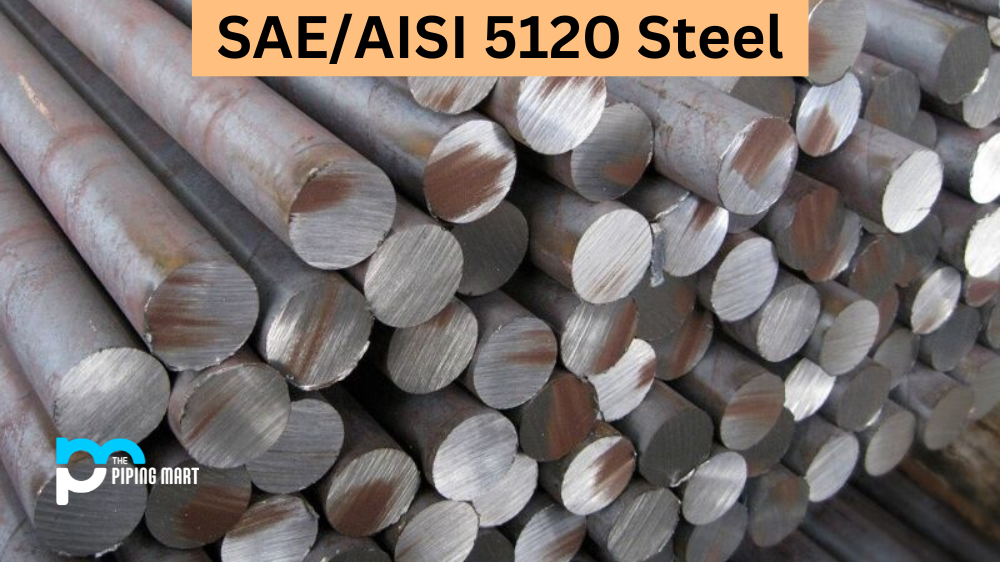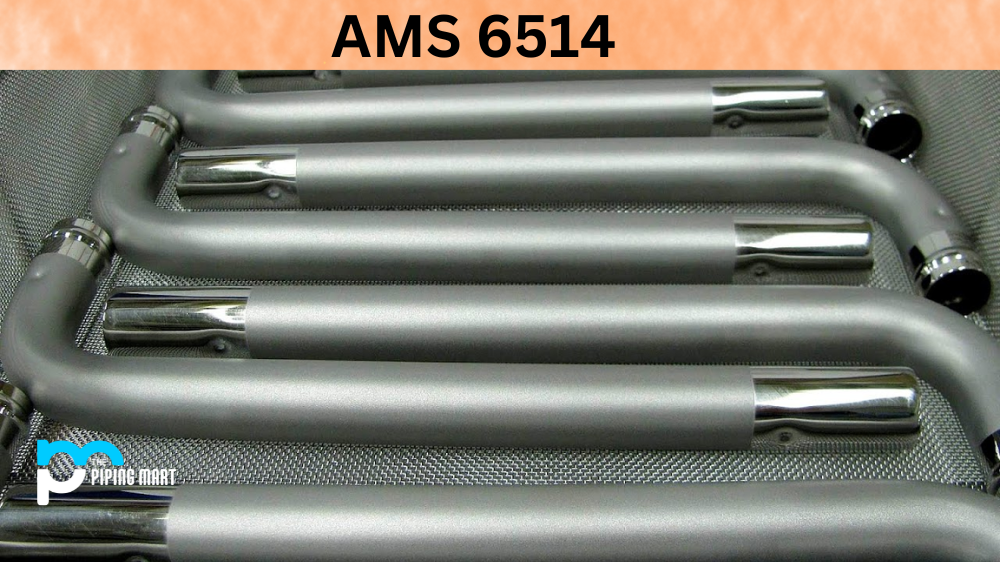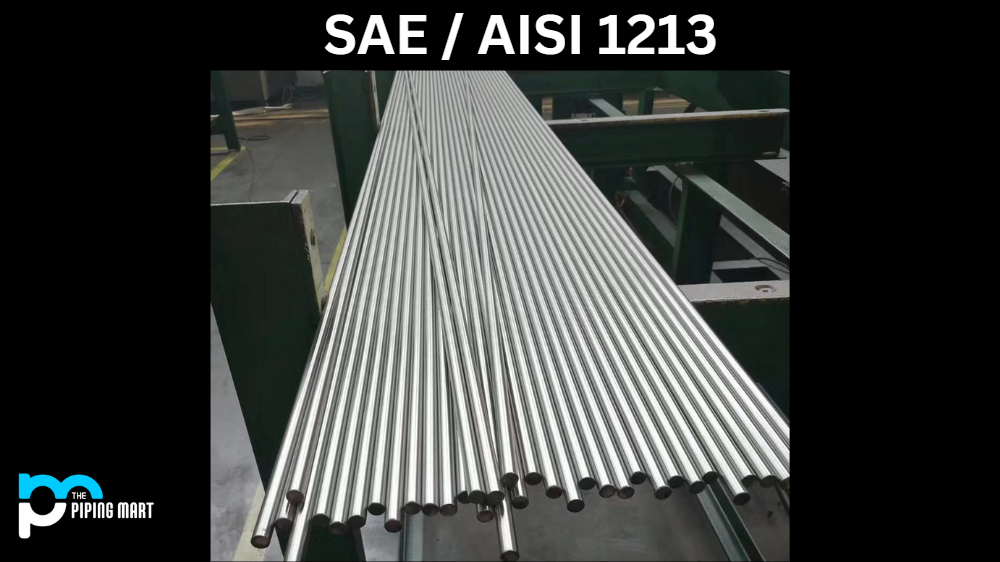SAE/AISI 5120 steel is a medium carbon alloy steel used in a wide array of applications. This steel is known for its impressive machinability, strength, and cost-effectiveness. SAE/AISI 5120 Alloy Steel is a low-carbon, chromium-containing steel commonly used to manufacture parts in machinery and equipment. The SAE 5120 chemical composition includes carbon, chromium, and manganese, giving it high strength and hardness. AISI 5120 steel is known for its excellent weldability and machinability, making it a popular choice for manufacturers. Additionally, SAE-AISI 5120 steel has good resistance to corrosion and wear, allowing it to withstand harsh operating conditions. As a UNS G51200 alloy, this steel is highly customizable and can be heat-treated to improve its properties further. It is no wonder why SAE 5120 steel is a top choice for many engineers and manufacturers worldwide. In this blog post, we’ll take a closer look at the uses, corrosion resistance, heat resistance, heat treatment process, machining process, and welding process of SAE/AISI 5120 steel.
What Forms of AISI 5120 is Available at Piping Mart?
- Nut
- Bar
- Bolt
- Pipe
- Screw
- Tubing
- Valves
- Washers
- Flanges
- Fasteners
- Electrodes
- Stud Bolts
- Sheet Plates
- Pipe Fittings
- Forged Fitting
- Instrumentation Fittings
AISI 5120 Composition
| Element | Weight % |
| C | 0.17-0.22 |
| Mn | 0.70-0.90 |
| P | 0.035 (max) |
| S | 0.04 (max) |
| Si | 0.15-0.30 |
| Cr | 0.70-0.90 |
AISI 5120 Physical Properties
AISI 5120 is a very versatile chromium-manganese-molybdenum alloy steel that is often used when strength and toughness are key requirements. It has excellent machinability properties and can be worked into various shapes, such as bars, rods, tubes and wire with ease. As a result of its excellent strength, it has been used in automotive applications over the years, though its most common use is in the manufacture of gears for larger machinery and machine tools. Additionally, due to its good wear resistance it can also be found in many industrial parts subject to abrasion or wear. AISI 5120 offers tremendous versatility thanks to these physical properties and makes an attractive choice for many applications requiring strength and durability.
AISI 5120 Mechanical Properties
| Properties | Conditions | ||
| T (°C) | Treatment | ||
| Density (×1000 kg/m3) | 7.7-8.03 | 25 | |
| Poisson’s Ratio | 0.27-0.30 | 25 | |
| Elastic Modulus (GPa) | 190-210 | 25 | |
AISI 5120 Equivalent
- ASTM A322
- ASTM A331
- ASTM A519
- SAE J404
- SAE J770
- UNS G51200
AISI 5120 Uses
SAE/AISI 5120 steel is used in many industries, including the automotive industry, where it is used to make parts like gears and shafts, as well as construction and agriculture, where it can be found in farm equipment. This type of steel is also commonly used in industrial machinery such as conveyor belts and pumps due to its high strength and durability.
AISI 5120 Uses in Industries
Automotive Industry
AISI 5120, also known as 20Cr steel, is commonly used in the automotive industry for its high strength and wear resistance. It often produces gears, shafts, and other critical vehicle components. The steel’s ability to withstand heavy loads and resist wear makes it a popular choice for various automotive applications.
Aerospace Industry
The aerospace industry also utilizes AISI 5120 due to its strength and toughness. This steel is commonly used to produce aircraft landing gear, engine components, and structural parts. Its high fatigue strength makes it suitable for use in demanding aerospace environments.
Construction Industry
AISI 5120 is commonly used in the construction industry for its durability and corrosion resistance. It is often used to produce bolts, nuts, and other fasteners for buildings and infrastructure projects. The steel’s high tensile strength is also suitable for structural components such as beams and columns.
Manufacturing Industry
AISI 5120 is widely used in the manufacturing industry due to its versatility and cost-effectiveness. It can be easily machined into various shapes and sizes, making it suitable for various applications, such as tools, machinery parts, and equipment components.
Oil & Gas Industry
The oil and gas industry relies on AISI 5120 for its strength and corrosion resistance properties. It is often used in drilling equipment, valves, pumps, and other critical components exposed to harsh environments such as high temperatures and corrosive substances.
Marine Industry
In the marine industry, AISI 5120 is commonly used for its excellent resistance to saltwater corrosion. It is often used in shipbuilding for various structural components such as propeller shafts, rudders, and anchor chains. Its ability to withstand extreme conditions at sea makes it a reliable choice for marine applications.
AISI 5120 Corrosion Resistance
SAE/AISI 5120 steel has excellent corrosion resistance, making it ideal for use in wet environments or areas with higher levels of humidity. It resists both acidic and alkaline solutions, which makes it an ideal choice for industrial applications that require exposure to corrosive elements. The addition of chromium makes this type of steel even more resistant to corrosion so that it can withstand long-term use without becoming damaged or weakened.
AISI 5120 Heat Resistance
SAE/AISI 5120 has excellent heat resistance, which makes it ideal for applications that involve high temperatures. It can withstand temperatures up to 650°C (1200°F) without losing its strength or becoming brittle. This makes it an excellent choice for hot working processes such as forging or welding applications.
AISI 5120 Heat Treatment
SAE/AISI 5120 steel can be easily heat treated through normalizing or annealing processes depending on the desired results. Normalizing involves heating the material until it reaches approximately 860°C (1580°F), then allowing the material to cool slowly at room temperature until it reaches ambient temperature, whereas annealing involves heating the material until it reaches approximately 790°C (1450°F). Both processes help improve the material’s ductility while still retaining its strength properties.
AISI 5120 Machining
SAE/AISI 5120 has excellent machinability, making it easy to work using standard machine tools like lathes and milling machines. It does not require any special cutting tools or techniques or additional cooling during operation due to its low carbon content, which helps reduce warping when machining large components from this material.
AISI 5120 Welding
Welding SAE / AISI 5120 requires preheating before welding because this material has a high melting point (around 1360°C). Preheating helps prevent cracking during welding by reducing thermal stresses on the welded joint itself; however, welding should always be done using low current settings so as not to overheat the metal, which could lead to porosity issues within the weld itself.
Conclusion:
In conclusion, SAE / AISI5 120 offers superior strength at an affordable cost while exhibiting excellent corrosion resistance and exceptional machinability properties – making this type of steel ideal for many industrial applications such as those involving automotive parts production, construction projects, and agricultural equipment manufacturing among others – all thanks to its unique combination of chemical composition and physical characteristics! Additionally, its ability to be easily heat treated through normalizing or annealing processes and its simple weldability make this versatile metal suitable for use in almost any situation requiring a strong yet lightweight material. With all these features combined, it’s no wonder why SAE / AISI5 120 is quickly becoming one popular choice among manufacturers across various industries today!

Abhishek is a seasoned blogger and industry expert, sharing his insights and knowledge on various topics. With his research, Abhishek offers valuable insights and tips for professionals and enthusiasts. Follow him for expert advice on the latest trends and developments in the metal industry.




